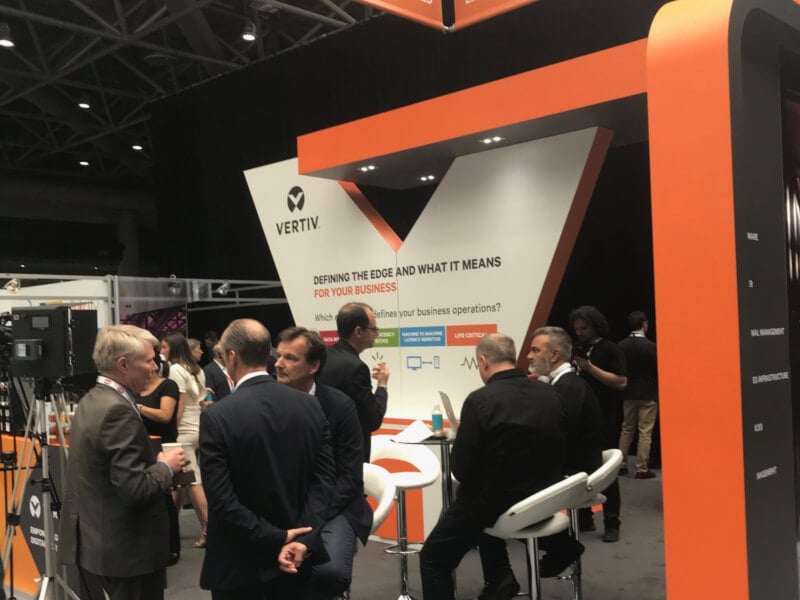Wondering who benefits most of the increasing edge computing capabilities of today’s data centers?
I often see my own pre-teens playing on their X-Box, whilst simultaneously watching YouTube content for game hints on their tablet and also face-timing the friends they are already
As we continue to consume data at an exponential rate of growth through applications such as Netflix, YouTube, Google and Amazon - and gear up for the emergence of autonomous vehicles, the necessity for fast, localised data processing at the network edge continues to grow.
Vast amounts of edge computing data are being consumed on mobile devices. Mobile internet traffic is set to quadruple by 2021 - with video streaming and online gaming growing by 5x.
The YouTube Generation ‘Generation C’ are driving this near-term network edge growth
Generation C is made up by 80% of millennials - YouTube’s core (by no means only) audience. Gen C is a mindset used to describe people who care deeply about creation, curation, connection and community, they are a powerful new driver in consumer culture. Michael Tobin OBE talks about Gen C in his book, ”Live, Love, Work, Prosper:“ Generation C is defined by behaviour and not by age. When they are not working, shopping or banking online, they are on social media. Gen C will judge your organisation by its website, Twitter, Facebook and Instagram presence.”
Gen C are taste-makers, they define social networks and are constantly connected. YouTube and Netflix are their habitats for entertainment - video on demand is embedded in their understanding of broadcast content consumption.
Social networks, online shopping and constant connectivity
Almost 9/10 of Gen C have a social media profile, with two-thirds of them updating their profiles daily while also uploading their own photos and videos to their social networks. The majority will also use social networks for peer approval on buying decisions - culminating with an influence that accounts for $500bn of spending in the US alone. When it comes to connectivity, over 90% of Gen C sleep with their smartphone next to them.
The changing direction and volume of edge computing data
Today 80% to 90% of all data traffic is from the network edge to the consumer, data is meeting the demands of consumption. Soon that dynamic will shift as data
The changing network edge will be mission critical from several perspectives – and needs to be designed and built to support what Vertiv has identified as the Four Archetypes of Edge Data– Data Intensive, Human Latency Intensive, M2M Latency Intensive and Life Critical.
What is the network edge?
Over the last several years “edge computing” has become one of the most talked about trends in IT, and for good reason. Grand Valley Research projects a CAGR of 41% for edge computing between 2018 and 2025. Nearly every industry is recognising the limitations of supporting users and emerging technologies through centralised IT infrastructures (the core) and is pushing storage and computing closer to users and devices. That shift is becoming necessary because of the increased connectivity of devices and people and the huge volumes of data they generate and consume.
As the network edge emerges it is going to be of paramount importance that we turn our attention to who the real customer of edge
Like everything ever produced, the edge IT infrastructure requires a supply chain with numerous parties involved to deliver the end product. With the network edge, data and the personal
So, while we continue to build to support these needs, how does the edge IT infrastructure need to evolve to support future needs?
Future edge IT infrastructure requirements will go beyond consumption. Today’s network edge provides a means for consumption and sharing of data, tomorrow’s edge will need to provide far more in terms of data generation, decision making, complex validation and analytics as we move to push as much data into the edge as we consume from the edge.
It will be necessary to build the edge IT infrastructure to support the types of data transactions taking place whilst also taking into consideration the geographical profile of the data transfer. Edge computing requirements are going to be different for global/regional deployments; will your network edge be for a retail environment, telecommunications or campus-style deployment?
The ability to provide the necessary low-latency, resilient, redundant edge data
What does the future hold?
Today my children’s use of the edge outpaces my own – they consume vast amounts of data, and as they move through their teenage years I’m sure they will create even more data through their own use of social media. I’ll be interested to watch this unfold and wonder if my own data footprint will ever exceed or come close to theirs – probably not.





